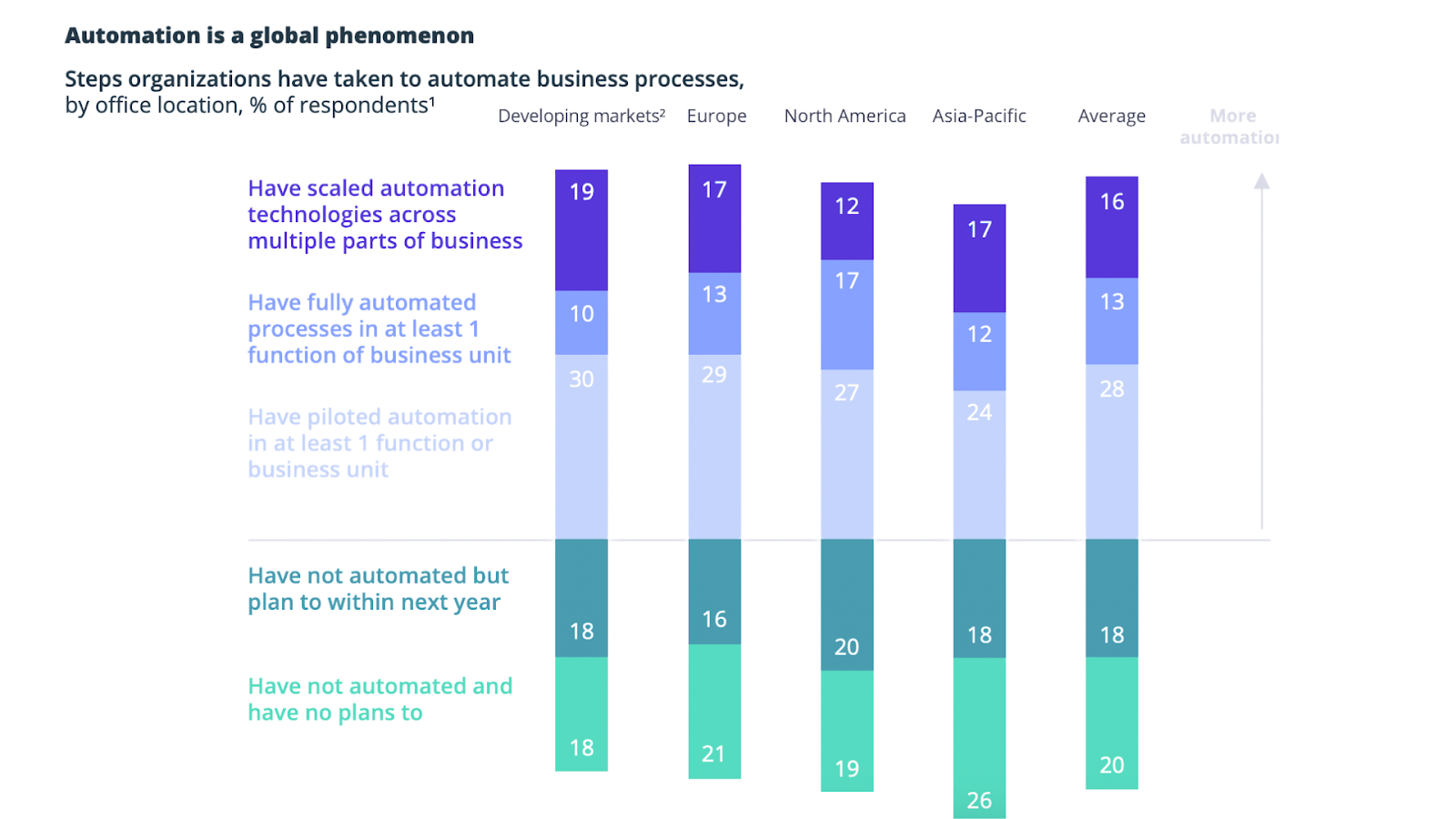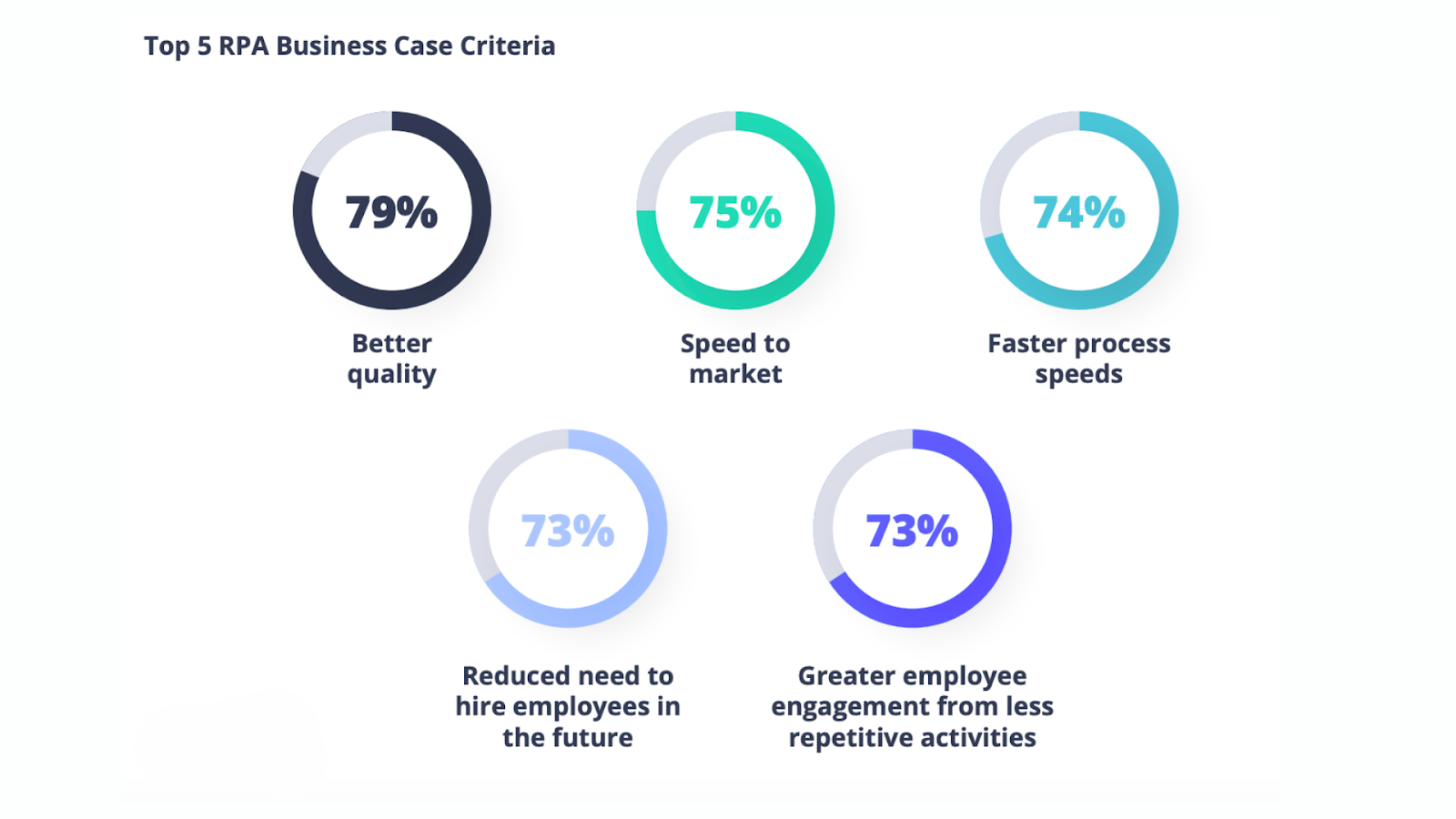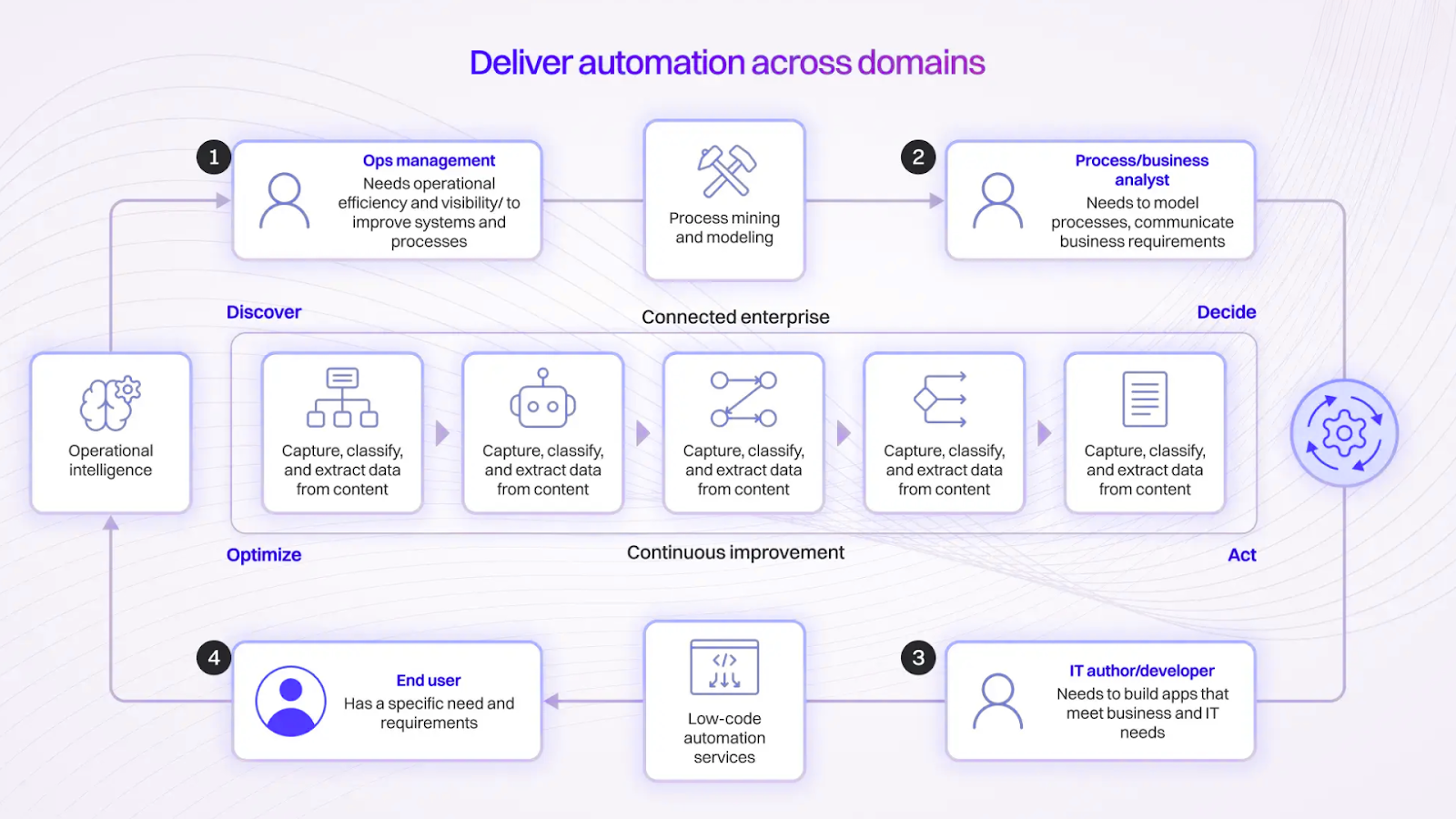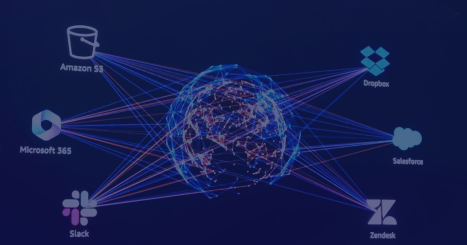Imagine cutting operational costs by 30% while boosting productivity across every department, without hiring a single new employee. That’s the power of enterprise automation. Once considered a futuristic luxury, it’s now a critical driver of agility, innovation, and scalability. Global industrial automation investment grew from around $160 billion in 2019 to upward of $205 billion in 2022–24, with forecasts expecting it to surpass $350–400 billion by 2030, forward-thinking companies are already turning it into a competitive advantage.
But a path to automation is a thorny one. To pan out, your automation strategy should sit on an enterprise approach and make technology a single fluid experience within your organization. Here’s how to reach this tough bar.
In view of the rapid expansion of automation across industries , should we be concerned? Apprehensive? Excited? Enthusiastic? Perhaps all of the above. Book our free Discovery Session – a conversation designed to help you understand the practical impact of emerging capabilities.

What is enterprise automation ?
Enterprise automation builds on the idea of basic task automation – like using Excel macros or invoice processing tools – and scales it across the entire organization. It goes beyond isolated efficiencies to strategically streamline, integrate, and automate complex, interrelated business processes.
By connecting core systems like Enterprise Resource Planning (ERP), Customer Relationship Management (CRM), and Supply Chain Management (SCM) systems, thereby addressing complex, interrelated processes that span various business units, enterprise automation breaks down silos and enables end-to-end process orchestration. But it’s not just about adding tools. True enterprise automation requires a centralized, scalable approach aligned with broader business goals: transforming automation from a quick fix into a long-term advantage.

6 Types of enterprise automation , explained
There are several different types of enterprise automation. You can combine different types to develop your own enterprise automation strategy.
1. Basic enterprise automation
Basic automation refers to automating basic, repetitive tasks and processes. A basic automation that people are familiar with is out-of-office auto-replies to emails. Monthly sales reports that are emailed on a schedule is another example of basic enterprise automation. Basic automations are the building blocks of a more comprehensive enterprise automation system.
2. Rule-based automation
Rule-based automation is a type of automation where tasks and processes are executed based on predefined rules and conditions. A popular example of rule-based automation is email You set up “rules,” such as the sender’s name and keywords, and the email is automatically filtered into the appropriate folder.
3. Robotic process automation (RPA)
Robotic process automation is considered to be one of the approaches to Business Process Automation that includes the implementation of software bots. Following AI insights, bots complete high-volume, rule-based tasks, emulating human interaction with software applications.
Although RPA is technically a form of process automation, its focus is placed on automating the types of tasks traditionally performed by humans. Because of its non-intrusive nature and ease of deployment for specific repetitive tasks, RPA can often serve as a quick and effective automation solution that doesn’t require extensive changes to the existing IT infrastructure.

4. Business process automation (BPA)
Unlike basic automation, the turf of BPA spans across entire functions. In particular, process automation streamlines, and orchestrates repetitive business processes, for which it requires a multi-step automation workflow. The main differentiator of enterprise process automation is its reliance on integration, API, and data exchange across internal or external systems.
Automation of a new employee onboarding process is a fine specimen of BPA. In this case, a company deploys a workflow automation tool to manage the entire process from job offer acceptance, document submission, and verification, to provisioning work equipment and scheduling orientation sessions, with minimal human intervention.
4. Integration automation
Enterprise automation strategies based on the integration-first approach mean connecting different business software systems and using this connectivity to automate manual tasks. In this case, connected business systems operate on shared data, reducing errors and eliminating the need for manual data entry.
For example, ERP systems hinge on integration automation to exchange data with finance, sales, and customer success departments. By connecting it with a CRM platform like Salesforce, businesses can streamline order management and execution. Once an order is added to a CRM, it’s automatically transferred to an ERP system and fed to the warehouse.
The integration works backward: an ERP then provides sales insight into order statuses right from a CRM dashboard.
5. Artificial intelligence (AI) and machine learning (ML) automation
AI and ML can be used to automate tasks that rely on pattern recognition and predictive analysis. In addition, AI can learn from data and adapt to new situations. For example, AI can use consumer patterns to send personalized recommendations automatically. AI automation can refine its recommendations as it receives more data.
How to win enterprise automation: a detailed roadmap
Enterprise automation path might differ from company to company depending on their size, IT structure, and automation level. However, the overall strategy remains the same and can be summarized as follows:

Step 1: Identify processes that are worth automating
Start with a process audit. Look for high-volume, repetitive workflows that are rules-based, prone to human error, or create bottlenecks. These are strong candidates for automation. Focus first on areas with clear KPIs- such as invoice processing, customer onboarding, or order management , where automation can show measurable impact quickly.
We use process mining and log analysis to uncover inefficiencies that aren’t visible in standard workflows, helping you find automation potential where others don’t.
Step 2: Select the right tools for your stack
Choose technologies that match your business environment. RPA is great for legacy systems; AI/ML works for decision-making; and cloud-native tools are key for modern, scalable systems. Think ecosystem, not isolated tools. Choose platforms that integrate well with your existing ERP, CRM, and data infrastructure.
We specialize in building automation on AWS using services like Step Functions for orchestration, Lambda for logic, and EventBridge for event-driven workflows -all secured and cost-optimized.

Case study
5 min to read
Automating remittance workflows and reducing costs with GenAI and AWS
Step 3: Build a cross-functional automation team
Automation isn’t just IT’s job. Create a team that includes business analysts, developers, operations leaders, and end-users. This ensures solutions are practical, usable, and aligned with real-world needs. Empower a governance team or automation Center of Excellence (CoE) to define standards, track performance, and drive adoption.
Our engineers work alongside your team using Infrastructure as Code (Terraform, AWS CDK) and GitOps practices so automations are versioned, tested, and repeatable.
Step 4: Develop and test automation solutions
Build small-scale pilots and proof-of-concept projects. These should be low-risk but valuable – perfect opportunities to test your tools and refine your processes before full-scale deployment. Use this phase to build trust internally. Highlight wins, document learnings, and gather feedback from early users.
We design modular automations using Docker or serverless components, so they’re portable across teams and easy to monitor and update
Step 5: Roll out automation across the enterprise
Once a pilot is successful, gradually expand its reach to other departments and workflows. Standardize deployment practices to ensure consistency and reduce friction during scale-up. Keep communication strong. Train staff, address change resistance, and emphasize that automation is there to empower, not replace.
With reusable code libraries and AWS-native automation blueprints, we help clients reduce delivery time and rollout risks, without sacrificing flexibility.
If you’re exploring where AI can make the biggest impact in your organization, let’s talk. Book a call with our team to discuss your goals and how agentic AI can help you get there faster.
Step 6: Monitor, optimize, and evolve
Automation isn’t set-and-forget. Continuously track ROI, process speed, error rates, and employee feedback. Use insights to improve existing automations and uncover new opportunities. Make automation part of your innovation cycle. Schedule regular reviews and tie outcomes to business goals, not just technical performance.
We integrate tools like AWS CloudWatch, OpenTelemetry, and Grafana into every solution, so you get real-time insights and alerts across all automation layers.


